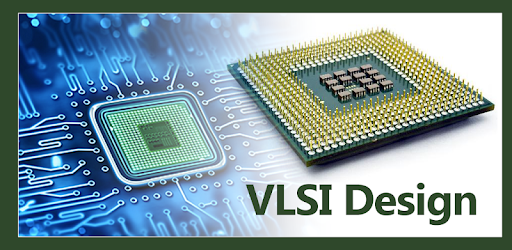1: Introduction to VLSI Design
1.1 Introduction to VLSI Technology
1.2 Evolution of VLSI from SSI, MSI, LSI to VLSI
1.3 Importance and Applications of VLSI in Modern Electronics
1.4 VLSI Design Flow
1.5 Overview of the VLSI Design Process (Front-end and Back-end)
1.6 Design Abstraction Levels: Behavioral, Register Transfer Level (RTL), Gate-Level, and Physical Level
1.7 Session Activities:
1.7.1 Overview of Digital Design Tools (e.g., Xilinx, Cadence, Synopsys)
2: Digital Design Concepts for VLSI
2.1 Basic Digital Circuits
2.2 Review of Combinational Circuits (Multiplexers, Encoders, Decoders)
2.3 Sequential Circuits (Flip-Flops, Latches, Shift Registers)
2.4 Designing with HDL
2.5 Introduction to Verilog and VHDL: Syntax and Structure
2.6 Combinational and Sequential Design Using HDL
2.7 Session Activities:
2.7.1 Writing Basic Verilog/VHDL Modules for Combinational and Sequential Circuits
3: CMOS Technology and Circuit Design
3.1 CMOS Transistor Basics
3.2 Introduction to CMOS (Complementary Metal-Oxide-Semiconductor) Technology
3.3 Working Principles of MOSFETs
3.4 Designing Logic Gates Using CMOS
3.5 Inverters, NAND, NOR, and Other Logic Gates Using CMOS Technology
3.6 Power Consumption in CMOS Circuits: Static and Dynamic Power
3.7 Session Activities:
3.7.1 Designing and Simulating a Basic CMOS Inverter and Logic Gates
4: RTL Design and Coding
4.1 Register Transfer Level (RTL) Design
4.2 What is RTL Design?
4.3 Writing RTL Code in Verilog and VHDL
4.4 Design Techniques
4.5 Pipelining, Parallelism, and Other RTL Optimizations
4.6 Behavioral vs. Structural Modeling
4.7 Session Activities:
4.7.1 Implementing a Simple Arithmetic Logic Unit (ALU) in RTL
5: Logic Synthesis and Optimization
5.1 Logic Synthesis
5.2 Introduction to Synthesis Tools and Techniques
5.3 Converting RTL Design to Gate-Level Netlist
5.4 Optimization Techniques
5.5 Power, Performance, and Area (PPA) Optimization
5.6 Timing Analysis and Reducing Logic Depth
5.7 Session Activities:
5.7.1 Performing Logic Synthesis on an RTL Design and Analyzing Synthesis Reports
6: Verification Fundamentals
6.1 Importance of Verification in VLSI
6.2 Types of Verification: Functional, Timing, and Formal Verification
6.3 Verification Process in VLSI: Simulation, Coverage, and Debugging
6.4 Testbenches and Simulation
6.5 Writing Testbenches in Verilog/VHDL for Simulation
6.6 Stimulus Generation and Checking Expected Outputs
6.7 Session Activities:
6.7.1 Writing and Simulating a Testbench for a Simple Digital Circuit
7: Functional Verification
7.1 Introduction to Functional Verification
7.2 Verifying the Functionality of RTL Designs
7.3 Directed vs. Random Testing Techniques
7.4 Simulation and Debugging
7.5 Using Waveform Viewers for Debugging Simulation Results
7.6 Concepts of Event-Driven Simulation and Delta Cycles
7.7 Session Activities:
7.7.1 Implementing Functional Verification for an ALU or Counter Module
8: Verification Methodologies (UVM and SystemVerilog)
8.1 SystemVerilog for Verification
8.2 Overview of SystemVerilog Language Features for Verification
8.3 Writing Verification Code with SystemVerilog
8.4 UVM (Universal Verification Methodology)
8.5 Introduction to UVM Framework for Scalable Verification
8.6 Components of UVM: Agents, Drivers, Monitors, and Scoreboards
8.7 Session Activities:
8.7.1 Creating a Basic SystemVerilog/UVM Testbench for a Digital Design
9: Timing Analysis and Static Timing Verification (STA)
9.1 Timing Constraints in VLSI
9.2 Setup and Hold Times, Clock Skew, and Jitter
9.3 Critical Path Analysis in Digital Circuits
9.4 Static Timing Analysis (STA)
9.5 Introduction to STA Tools and Timing Verification Flow
9.6 Performing Setup and Hold Checks
9.7 Session Activities:
9.7.1 Performing Static Timing Analysis on an RTL Design and Fixing Timing Violations
10: Design for Testability (DFT)
10.1 Challenges in Testing VLSI Designs(Ref: Op-Amps in VLSI Design)
10.2 Fault Modeling: Stuck-at Faults, Transition Faults
10.3 Design for Testability Techniques: Scan Chains, Built-in Self-Test (BIST)
10.4 Introduction to Automatic Test Pattern Generation (ATPG)
10.5 Generating Test Patterns for Detecting Faults in ICs
10.6 DFT Tools and Methodologies
10.7 Session Activities:
10.7.1 Implementing Scan Chains in a Simple Digital Design and Performing ATPG
11: Low Power VLSI Design
11.1 Power Dissipation in VLSI
11.2 Sources of Power Consumption: Dynamic and Leakage Power
11.3 Techniques to Reduce Power: Clock Gating, Power Gating, Multi-VDD
11.4 Designing for Low Power
11.5 Optimizing Designs for Low Power in RTL and Synthesis Stages
11.6 Power-Aware Verification Techniques
11.7 Session Activities:
11.7.1 Implementing Clock Gating in a Design to Reduce Dynamic Power Consumption
12: FPGA-Based Prototyping for VLSI Designs
12.1 Introduction to FPGA Prototyping
12.2 Overview of FPGA Architecture
12.3 Advantages of Using FPGAs for Prototyping VLSI Designs
12.4 Design Flow for FPGA Prototyping
12.5 Synthesis, Place and Route, and Programming on FPGAs
12.6 Session Activities:
12.6.1 Mapping an RTL Design to an FPGA and Performing a Basic Functionality Check
13: Physical Design Overview
13.1 Physical Design Flow
13.2 From Synthesis to Layout: Placement, Routing, and Physical Verification
13.3 Power Distribution and Clock Tree Synthesis
13.4 Challenges in Physical Design
13.5 Area Optimization, Power Delivery, and Signal Integrity
13.6 Session Activities:
13.6.1 Introduction to Place and Route Tools and Generating a Simple Floorplan
14: Project Work and Case Studies
14.1 End-to-End Design and Verification Flow
14.2 Overview of a Complete VLSI Design and Verification Cycle
14.3 Case Studies of Real-World VLSI Projects (e.g., Microprocessor Design)
14.4 Project Presentation
14.5 Participants Present Their VLSI Design Project from RTL to Verification
14.6 Peer Review and Instructor Feedback
14.7 Session Activities:
14.7.1 Final Project Demonstration: Presenting a Complete Design and Verification Flow for a Chosen Module (e.g., CPU or Memory Module)







Reviews
There are no reviews yet.